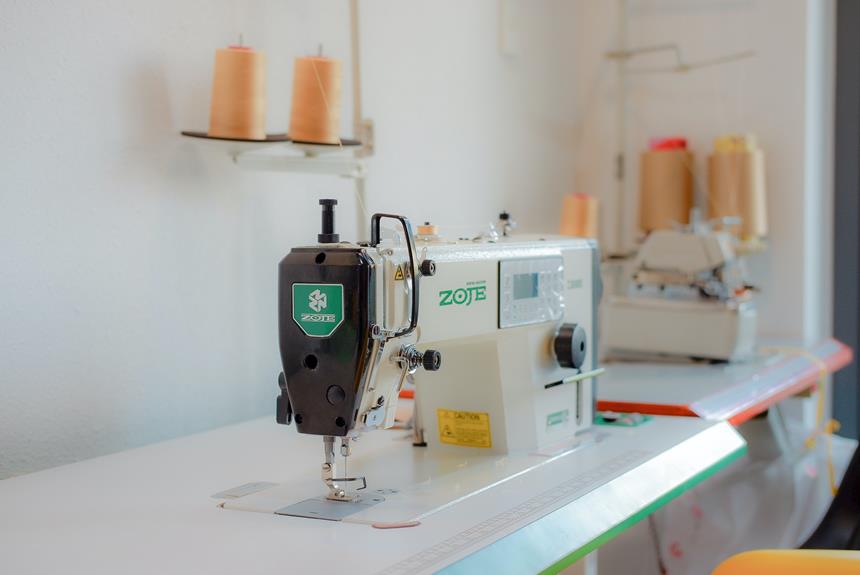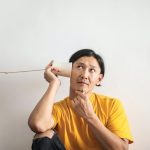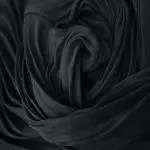Are you struggling with puckered seams and uneven hems in your bias sewing projects? In this article, we'll explore five common bias sewing mistakes that could be sabotaging your efforts to create flawless garments.
By understanding these errors and learning how to avoid them, you'll be able to elevate the quality of your bias sewing and achieve professional-looking results.
Whether you're a seasoned sewist or a beginner looking to improve your skills, mastering bias sewing techniques is crucial for creating garments with a beautiful drape and fit.
Let's delve into the common mistakes and discover the solutions to ensure your bias sewing projects turn out perfectly.
Key Takeaways
- Cutting along the bias adds elasticity and beautiful drape to the fabric.
- Proper fabric preparation is crucial for the success of the sewing project.
- Ignoring pattern layout guidelines can result in fabric wastage.
- Stay stitching prevents distortion and ensures fabric stability.
Not Understanding Bias Grain
Not understanding the bias grain can lead to fabric distortion and misalignment in your sewing projects. Grasping the importance of bias is crucial for achieving professional-looking results.
The bias grain runs at a 45-degree angle to the straight grain and the cross-grain of the fabric. When you cut along the bias, the fabric gains elasticity and drapes beautifully. This is particularly important for creating garments that need to hug the body or flow gracefully. Understanding the behavior of fabric on the bias will allow you to manipulate it effectively to create stunning designs.
It's important to note that cutting along the bias requires special attention. If not handled properly, it can result in stretching and warping of the fabric, leading to misshapen and ill-fitting garments. By understanding the importance of the bias grain, you can avoid these pitfalls and harness its unique properties to elevate your sewing projects.
Grasping the fabric behavior along the bias will empower you to create garments with exquisite drape and movement, showcasing your mastery in the art of sewing.
Ignoring Pattern Layout Guidelines
Are you inadvertently disregarding the pattern layout guidelines when preparing your fabric for sewing? Ignoring pattern layout guidelines can lead to fabric wastage and incorrect pattern placement. Proper fabric preparation is crucial to the success of your sewing project.
When laying out your pattern pieces, take the time to study the layout guide provided with the pattern. This will ensure that you're positioning the pieces correctly on the fabric to minimize waste and ensure that the grainline is aligned as per the pattern instructions.
When making pattern adjustments, it's important to pay attention to how these changes may affect the layout. For instance, if you've lengthened a garment, you may need to adjust the fabric layout accordingly to accommodate the additional length. Ignoring these layout adjustments can result in inadequate fabric for your project and may affect the drape and overall look of the finished piece.
Improper Cutting Techniques
When cutting your fabric for sewing projects, be mindful of using sharp fabric scissors to ensure precise and clean edges. Proper cutting techniques are crucial for achieving professional-looking garments. Here are some common mistakes to avoid:
- Using dull scissors: Dull fabric scissors can lead to frayed edges, which may affect the overall look of your project and result in fabric waste.
- Ignoring pattern layout guidelines: Failing to follow pattern layout guidelines can lead to inefficient use of fabric, resulting in unnecessary waste.
- Not considering fabric stretch and drape: Cutting against the grain or not accounting for fabric stretch and drape can lead to garments that don't fit properly, causing fabric waste and dissatisfaction with the final outcome.
- Cutting inaccurately: Inaccurate cutting can result in pieces not fitting together correctly, leading to fabric waste and frustration.
- Lack of attention to pattern placement: Failing to pay attention to pattern placement can result in mismatched designs and unnecessary fabric waste.
Ensuring precise cutting techniques won't only minimize fabric waste but also contribute to achieving a professional finish for your sewing projects.
Neglecting to Stay Stitch
Avoid neglecting to stay stitch your fabric edges to prevent distortion and ensure the stability of your sewing projects. Stay stitching is a simple and crucial technique that involves stitching along the edges of your fabric pieces to prevent stretching and distortion. By neglecting to stay stitch, you risk the fabric losing its shape, especially along curved or bias edges. Below is a table outlining the potential issues caused by neglecting to stay stitch and the benefits of incorporating this essential step into your fabric preparation.
| Issues Caused by Neglecting to Stay Stitch | Benefits of Stay Stitching |
|---|---|
| Distorted fabric edges | Maintains fabric shape |
| Uneven seam allowances | Prevents stretching |
| Difficulty in matching pattern pieces | Provides stability |
| Misshapen garment during construction | Ensures accurate fit |
Failing to Handle Bias Seams Carefully
Handle bias seams carefully to avoid stretching and distortion in your sewing projects. When working with bias tape, it's crucial to handle the seams with care to prevent fabric movement and maintain the shape and integrity of the garment. Neglecting this aspect can lead to uneven edges and an ill-fitting final product.
To ensure you handle bias seams carefully, consider the following tips:
- Pin the Seams: Secure the bias tape and fabric layers together with pins before stitching to prevent shifting and ensure even seam allowances.
- Use a Walking Foot: When sewing bias seams, a walking foot can help feed the fabric layers evenly through the machine, reducing the risk of stretching and distortion.
- Avoid Pulling: Refrain from pulling or tugging the fabric as you sew, as this can cause the bias tape to stretch and result in misshapen seams.
- Press Carefully: After stitching, press the bias seams gently to set the stitches and avoid excessive stretching from the heat of the iron.
- Check for Stretch: Before finalizing the seams, double-check for any unintended stretching or distortion, and make adjustments as needed to ensure a professional finish.
Frequently Asked Questions
Can You Provide Tips for Choosing the Right Fabric for Bias Sewing Projects?
When choosing fabric for bias sewing projects, consider the drape, weight, and stretch. Opt for fabrics like silk, rayon, or lightweight cotton for best results. Experiment with different sewing techniques to find what works best for your chosen fabric.
How Can I Prevent My Fabric From Stretching While Cutting on the Bias Grain?
To prevent stretching while cutting on the bias grain, use a rotary cutter and a cutting mat for accuracy. Gently pull the fabric taut, but not stretched, and cut slowly to maintain control.
Are There Any Alternative Methods to Stay Stitching for Preventing Bias Seams From Stretching?
To prevent stretching in bias sewing, try alternative methods like using fusible interfacing or starch spray. These can help stabilize the fabric without the need for stay stitching. Experiment with these techniques for more control.
What Are Some Common Signs That I May Have Neglected to Stay Stitch My Fabric Before Sewing on the Bias?
If you neglected stay stitching, signs include fabric distortion and uneven seams. Choose stable fabrics for bias cuts, and consider using twill tape or fusible interfacing for added reinforcement. Experiment with different methods to prevent fabric stretching.
Can You Offer Advice on How to Handle and Press Bias Seams to Prevent Distortion?
When handling bias seams, use a gentle touch to prevent distortion. Press with care, avoiding stretching. Choose stable fabrics for better results. Proper handling and pressing techniques are crucial to maintain the integrity of bias seams.
- How Does Ring Spun Cotton Affect Garment Fit and Shape Retention? - August 13, 2024
- What Are the Challenges in Producing Ring Spun Cotton? - August 13, 2024
- Is Ring Spun Cotton Suitable for Plus-Size Clothing? - August 13, 2024







